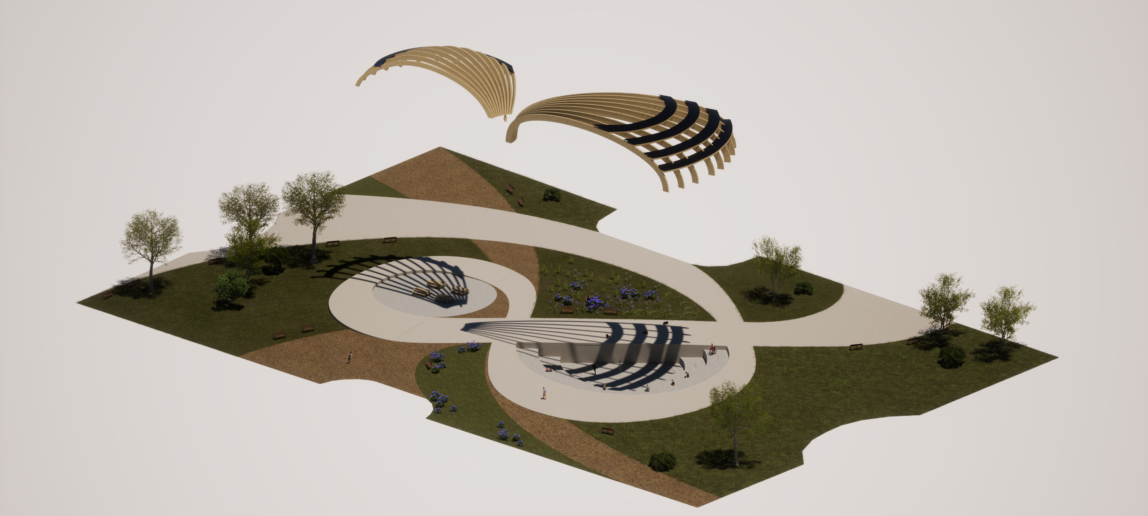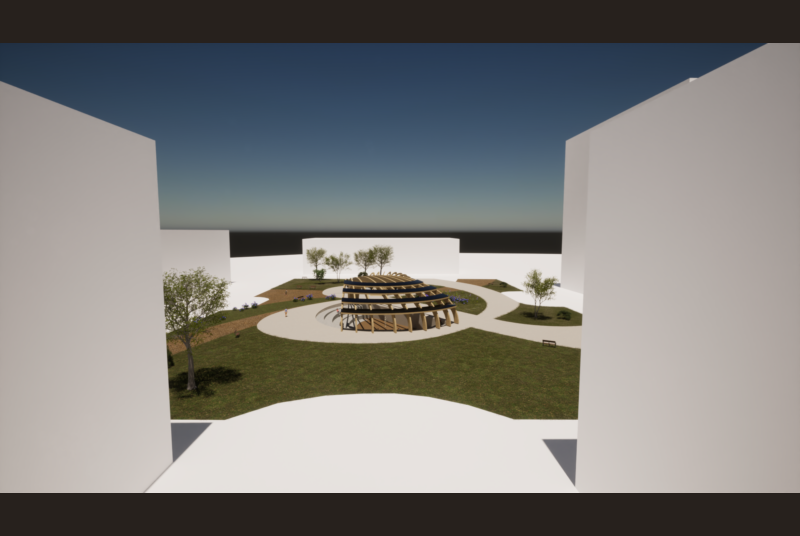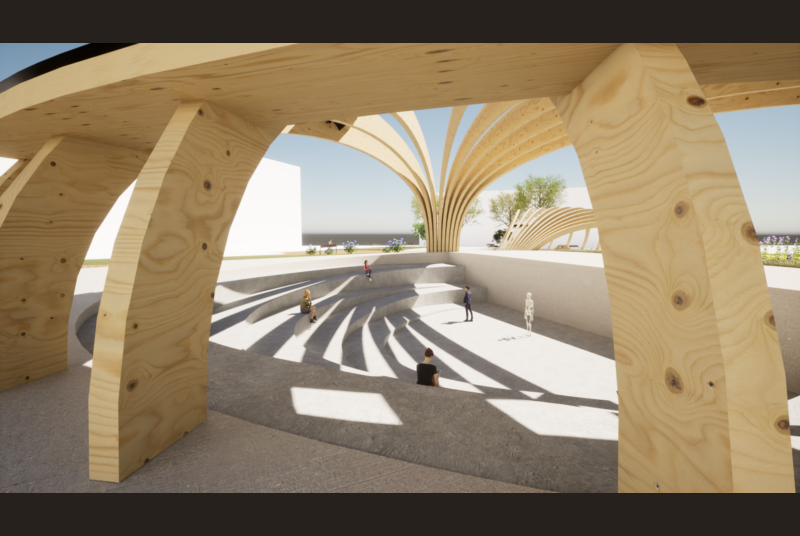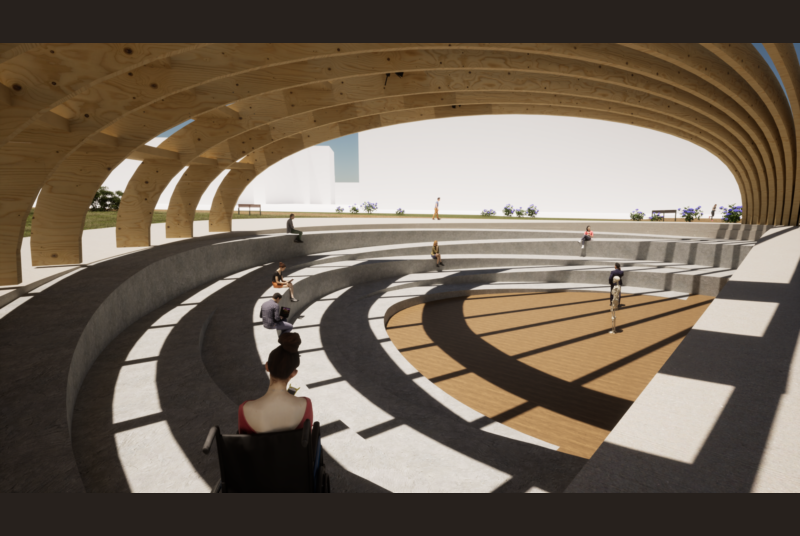Design Charrette Brings Students Together For Collaboration, Competition
Grace Callanan was making coffee late on the first night of the weekend-long Harold L. Adams Interdisciplinary Design Charrette when inspiration struck. The concept — which focused on an ampersand — helped Callanan and her teammates earn a first-place prize.
The competition, now in its sixth year, was created by Adams, Texas A&M Class of 1961 and an architecture professor who endowed interdisciplinary professorships. He died in 2022. Adams’ vision was to bring all disciplines within the College of Architecture — which then included visualization, now in the College of Performance, Visualization and Fine Arts — together for a design contest. This year’s event, held in the atrium of the Langford Architecture Center Building A, was a joint venture between the two schools.
The Feb. 3-5 competition was student-run, beginning Friday evening and concluding Sunday morning. Courtney Starrett, associate professor who holds the Harold Adams ’61 Interdisciplinary Endowed Professorship in Visualization, said the event had previously been for freshmen and sophomores, but this year added an upper level for juniors and seniors.
The prompt for students: Create a design for a multifunctional, multiuse area for people to gather, and to consider the different disciplines among the two schools, all while keeping Adams’ legacy in mind. The target area was the quadrangle surrounded by four campus buildings: Langford A, Liberal Arts & Humanities, Jack K. Williams Administration Building and Eller Oceanography and Meteorology Building.
Students were grouped into 12 teams, along with an observing team from the University of Maryland. Adams taught at Maryland, and Dawn Jourdan, former Texas A&M executive associate dean for architecture, is now the dean of architecture at Maryland. Starrett said future collaborations with the university are being discussed, as is turning the event into an intercollegiate experience.
Callanan, a freshman visualization major, shared the ampersand idea with her teammates — Maxine Huang (environmental design), Ryan Beaver (urban planning) and Alicia Martinez (visualization) — the following morning, and they jumped on board.
“Since the whole nature of the competition was promoting a connection between the School of Architecture and the College of Performance, Visualization and Fine Arts, we thought an ampersand would work well,” Callanan said. “Arts and science, architecture and visualization. And we also wanted to play into the ampersand of Texas A&M, instead of just the ‘T’ logo. We thought it would connect the quad and the schools pretty well.”
On Saturday, the students explored the quad, taking photographs and considering how students use the space: cutting across it, playing sports or sitting in the grass. The design shows how the development would take the shape of an ampersand, visible from above.
The design incorporates an amphitheater, a pavilion for shade, green space for activity and “desire paths,” which would allow people to still cut across diagonally and in the middle. Students chose building materials and planned for wheelchair accessibility and solar panels, along with outlets for charging devices to be used in outdoor classes.
“I got to be a landscaper,” Callanan said with a laugh. “I’ve never done that before. We wanted to keep a cool color palette, so we went with blues and purples, more relaxing instead of in-your-face reds and oranges and yellows. I had to make sure all the flowers and trees would survive in College Station, so we made sure they were all suited to the salty soils, and they get enough drainage and sunlight.”
Team members pulled an all-nighter on Saturday — “which I don’t recommend,” Callanan said — only going home to freshen up before the Sunday finish and presentations at 10 a.m. A panel of judges evaluated the projects. Winning teams were awarded cash prizes — a top prize was $2,000 — to go into the students’ accounts. Judges wanted to acknowledge all the students’ efforts, Starrett said, so each team was given some financial reward.
Callanan said she was surprised but gratified that her team finished on top.
“I really enjoyed it,” she said of the experience. “It sped by. I had a lot of fun and I feel like I learned a lot too. It’s always good to collaborate with other people.”
The team had a strong vision and graphic identity, Starrett said, along with a clear story connected to the ampersand.
“It had a cohesive nature,” she said. “Every design detail, every decision they made connected back. That was their North Star. It all tied together in a cohesive way and utilized the space effectively but with that strong story.”
Callanan said she was fortunate to be with a team that collaborated well throughout the project. Starrett said this sort of work has long-term benefits for students.
“They make friends and learn about the other disciplines,” Starrett said. “If a visualization student has an interest in public art, perhaps someday working with an architect or project manager will be a requirement. Those students from landscape architecture, urban planning, construction science gained from our students how to create a cohesive design, how to come to a theme, how to tell a story through form. There are lots of ways students learn from each other through this experience and gain respect for what each of the disciplines contributes to a project.”




